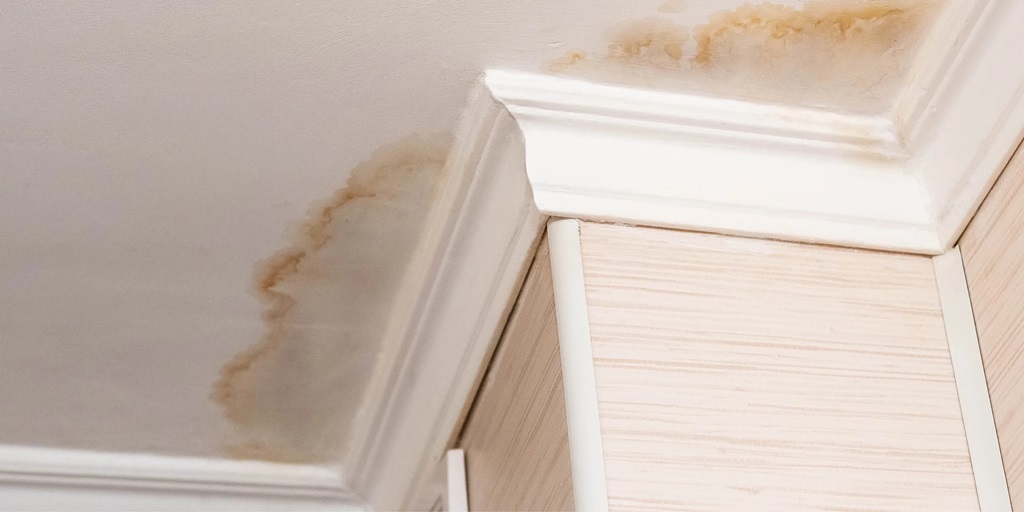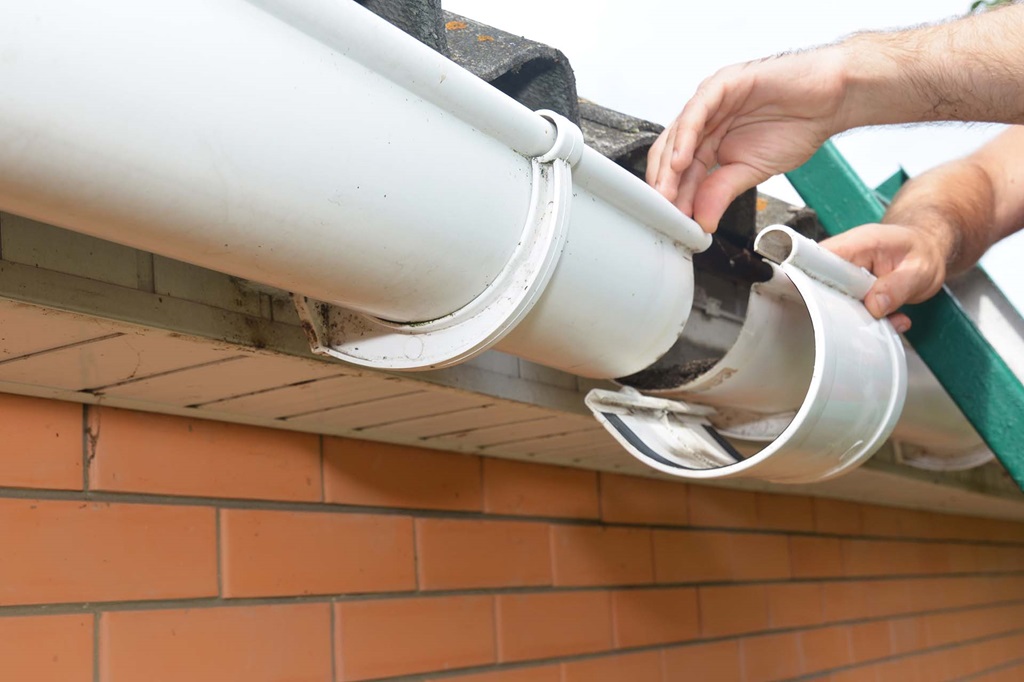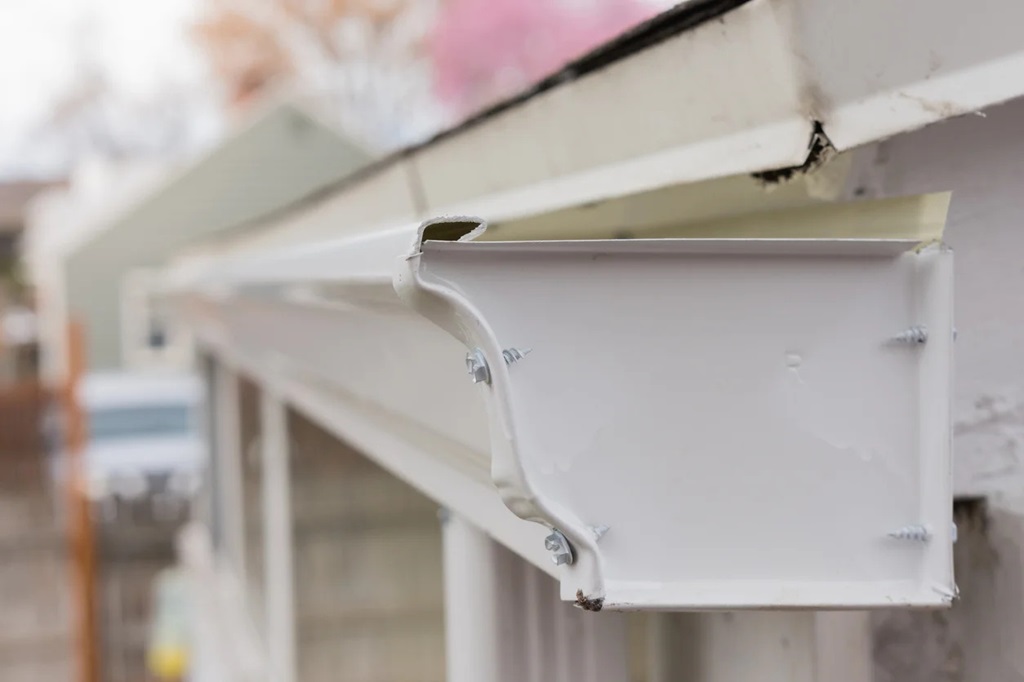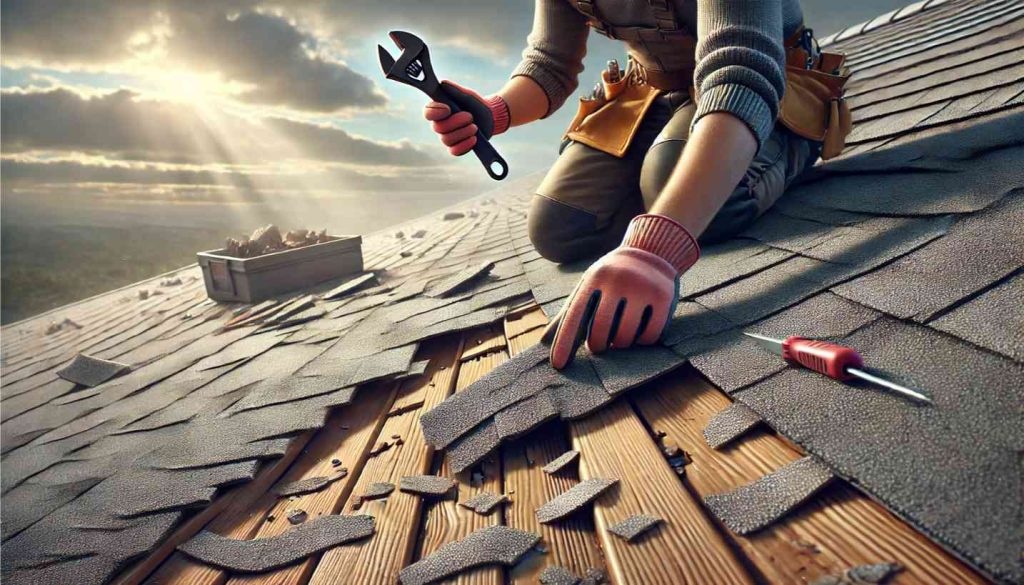Gutters play a crucial role in protecting your home from water damage. They are designed to collect rainwater from your roof and guide it away from your home’s foundation. However, if your gutters are leaking, they can cause serious problems that may seem minor at first but quickly become a major headache. If you’re unsure what damage can a leaking gutter cause, it’s important to find out to prevent any potential issues.
A leaking gutter may allow water to penetrate into your home’s interior and exterior, causing significant damage to the walls, ceilings, floors, and foundation. Over time, this can lead to rot, mold growth, and structural damage that can be costly and time-consuming to repair. Therefore, it is essential to understand what causes gutter leaks, where the water goes, and how it impacts your home. By taking proactive measures to prevent gutter leaks, you can avoid these problems and ensure that your home remains safe, dry, and structurally sound.
What Causes Gutters to Leak?
Gutters leak for a few key reasons:
Clogged Gutters
When gutters fill with leaves, debris, and sediment, water can overflow over the sides instead of properly draining. The excess weight of the clogged gutter can also cause it to pull away from the fascia board. This allows water to leak through gaps onto the exterior wall or drip behind the gutter.
Improper Slope
Gutters need a slope of at least 1/4 inch per 10 feet to keep water flowing. If the slope is too subtle, water will pool and potentially overflow the sides. A lack of slope can result from improper installation or gutter sagging over time.
Leaks in Gutter Seams and Joints
Gutters feature seams where sections connect and joints where downspouts attach. If the sealant at these connections deteriorates, openings allow interior leaks. This often occurs after years of exposure to harsh weather.
Rust Holes
Metal gutters will eventually rust, leading to pinhole leaks and larger holes. This accelerates when gutters are clogged, as standing water causes faster corrosion.
Loose Hangers
Gutter hangers attach the gutter to the fascia board. If these hangers come loose, the gutter can sag and separate from the home. The resulting gaps cause leakage.
Damaged Sections
Physical damage from objects hitting the gutters can dent or puncture the exterior. These openings will cause water to leak.
Where Does the Water Go?
When a gutter leaks, water follows a few paths:
Down the Exterior Wall
With exterior wall leaks, water follows the siding or flows within the wall cavity itself. This depends on where the gutter is separated from the home. Water seeping behind the siding causes damage to the exterior sheathing and framing. The water inside the wall cavity can soak insulation and rot wall studs.
Behind the Gutters
If water leaks directly behind the gutter itself, it soaks into the fascia board and roof edge. The constant moisture rots the wood in these areas over time.
Towards the Foundation
Leaks near downspouts often pour water right alongside the home’s foundation. This saturates the ground and penetrates the subsurface to soak the foundation walls and footing.
Splashing Ground Water
When water drops from the roofline, it can splashback underneath the siding or onto base materials like brick and stone. These materials absorb moisture and become pathways for water intrusion.
What Kinds of Damage Can Occur?
The variety of leakage paths leads to all sorts of potential damage:
Exterior Damage
- Rotted fascia, soffit, siding, and trim
- Growth of mold, mildew, and moss on surfaces
- Erosion and damage to masonry and grout
- Rusting of metal fixtures and utilities
Interior Damage
- Mold growth within walls and attic space
- Rotting wall studs and insulation
- Damage to drywall and interior finishes
- Musty odor and high indoor humidity
Structural Damage
- Wood rot compromising roof rafter tails
- Deterioration of load-bearing framing members
- Saturation and weakening of the foundation
- Cracks in foundation walls from chronic moisture
Landscaping Damage
- Erosion alongside the foundation
- Flooding of yards and gardens
- Death of plants from oversaturation
Signs of Gutter Damage
Many signs can tip you off to potential gutter issues before they escalate:
- Visible leaks during rain events
- Gutters overflowing or water pouring over the sides
- Sections pulling away from the home
- Sagging areas of gutter
- Rust stains or rust holes along gutters
- Downspouts leaking at seams
- Excessive moss or plant growth on the roof
- Wet spots or mold on exterior walls and siding
- Cracked, flaking, or bubbling paint near gutters
- Soft, rotted wood in fascia and soffit areas
- Musty smell in the attic or upper rooms
- Interior water stains on ceilings and upper walls
- Puddles form near the foundation after rain
Catching these early warning signs is crucial to prevent severe deterioration and water penetration issues.
How to Repair Leaking Gutter Damage
Fixing leaking gutters involves a combination of cleaning, sealing, replacing sections, and adjusting hangers:
Clean Out Debris
Use a gutter scoop or trowel to clear leaves, sticks, and dirt from the interior. A wet/dry shop vacuum can help suck out loose sediment.
Flush the Lines
Using a garden hose, flush dirt and debris through the downspouts. Make sure the water drains freely.
Re-balance the Slope
Use gutter leveling blocks to ensure at least a 1/4 inch of slope per 10 feet of gutter.
Reseal Seams and Joints
Apply fresh gutter sealant anywhere gaps are visible at seams and end caps. Consider sealing all connections as preventive maintenance.
Patch Holes and Breaches
Use gutter repair patches, sealant, or epoxy fillers to plug small holes or gaps along the gutters. Replace extensively damaged sections.
Refasten Hangers
Re-secure loose gutter hangers into solid fascia wood using rust-resistant screws. Add additional hangers if sagging areas persist.
Extend Downspouts
Make sure downspouts direct water at least 5 feet from the foundation. Consider a downspout extension or flexible tube.
Install Gutter Guards
Gutter guards prevent future debris buildup leading to clogs and overflow issues.
Preventing Gutter Leaks
Routine gutter maintenance and inspection can help minimize leaks:
- Inspect gutters twice per year and after major storms
- Clear debris from gutters as needed
- Make sure downspouts are secured and unclogged
- Refasten any loose hangers immediately
- Look for rust spots and seal them quickly with gutter sealant
- Consider hiring a professional gutter cleaning service for hard-to-reach areas
- Wash gutters with a hose to keep them clear of dirt and residue
- Reseal all gutter seams and joints every 2-3 years as preventive maintenance
- Install gutter guards to minimize debris accumulation
- Extend downspouts and use downspout extensions to direct water away from the foundation
- Repair or replace any substantially rusted or sagging sections of the gutter promptly
Performing gutter maintenance at least once per season will add years of life to your gutters and prevent major deterioration issues.
Last Thoughts
Ignoring a leaking gutter can lead to thousands in exterior and even structural damage costs. However, staying vigilant to signs of deterioration and performing regular maintenance keeps your gutters in shape. Catching problems quickly also allows relatively simple repairs. Investing a little time each season to inspect and clean your gutters goes a long way in preventing rot, mold, and water intrusion down the road. Proper care lets your gutters last for decades and keep your home safe from the elements.
FAQs
What are the first signs of a gutter leak?
The first signs are typically visible water dripping from seams during rain, downspouts leaking at connections, overflowing gutters, and moist or rotted wood around fascias.
How much does it cost to repair leaking gutters?
Basic repairs like sealing joints may cost $100-200. More extensive repairs or total replacements could be $500-2000 or more, depending on your home’s size.
Do I need to replace the entire gutter if there’s a leak?
Not necessarily – you can often patch small holes or replace just a damaged section. But if the gutters are very rusted or sagging, full replacement may be required.
Can I repair gutters myself or do I need a professional?
Handy homeowners can perform basic gutter cleaning, sealing, re-hanging, and patching. But if the damage is extensive, a professional’s expertise is recommended.
How often should gutters be inspected?
Ideally, gutters should be checked each spring and fall. Additionally, inspect them after major storms for potential damage. Checking them periodically throughout the year helps catch problems early.







